Pros and Cons of Smart Thermostats in 2025

Introduction to Pros Cons of Smart Thermostats for 2024:
Hey there, fellow tech enthusiasts and home improvement gurus! Are you ready to dive into the pros and cons of smart thermostats and our smart thermostat review? You’re in for a treat! Did you know that smart thermostats can save homeowners an average of 10-12% on heating costs and 15% on cooling? That’s some serious cash back in your pocket!
But before you rush out to buy one, let’s explore the ins and outs of these nifty devices and why use a smart thermostat. In this article, we’ll break down the pros and cons of smart thermostats, are smart thermostats worth it? We will also be helping you review smart thermostats and decide if they’re the right fit for your home sweet home. We’ll also discuss energy consumption and how to save money all while keeping your home cool in the summer and warm in the winter.
Related:
10 Clever Ways to Reduce Home Energy Bills
What Are Smart Thermostats?
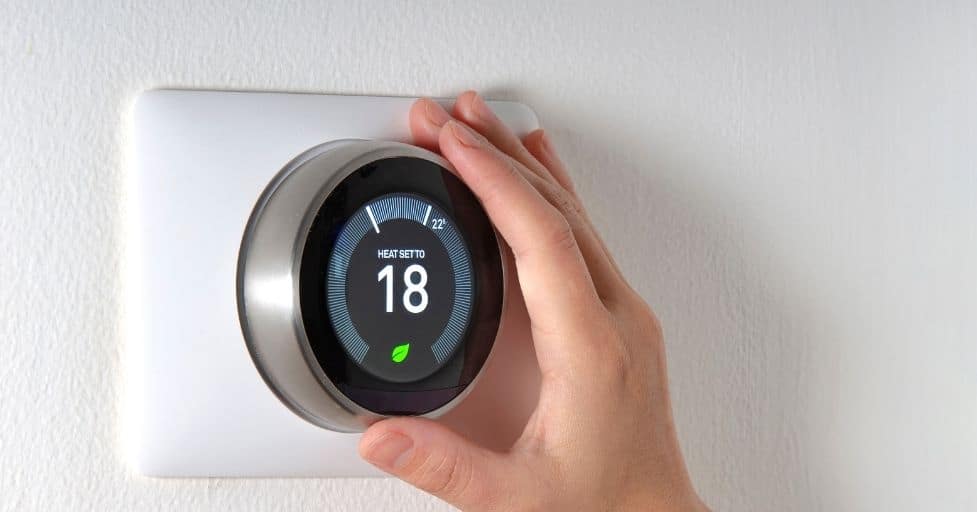
Remember the days of fiddling with those clunky old thermostats, trying to find that perfect temperature sweet spot? Well, those days are long gone! Let’s dive into the world of smart thermostats and see how these nifty gadgets are revolutionizing the way we control our home’s climate.
Definition of smart thermostats and basic functionality
Smart thermostats are like the brainiacs of the heating and air conditioning world. These intelligent devices do way more than just turn your heating and cooling on and off. They’re essentially mini-computers that can learn your preferences, adapt to your schedule, and even make decisions about your home’s temperature all on their own. Cool, right?
At their core, smart thermostats connect to your home’s Wi-Fi network, allowing you to control your HVAC system remotely through a smartphone app or web interface. But that’s just the tip of the iceberg! And some of the best wifi smart thermostats can also:
- Learn your temperature preferences and create custom schedules
- Detect when you’re away from home and adjust accordingly
- Provide detailed reports on your energy usage
- Integrate with other smart home devices for a truly connected experience
How they differ from traditional thermostats and why get a smart thermostat
Now, you might be thinking, “My old thermostat worked just fine, thank you very much!” And sure, traditional thermostats get the job done, but smart thermostats take it to a whole new level. Here’s different types of thermostats and how they stack up:
- Programmability on steroids: While some traditional thermostats let you set basic schedules, smart thermostats can learn and adapt to your routines automatically.
- Remote access: Forgot to turn down the heat before your vacation? No problem! With a smart thermostat, you can adjust your home’s temperature from anywhere in the world.
- Energy efficiency: Smart thermostats use advanced algorithms and sensors to optimize your HVAC usage, potentially saving you big bucks on your energy bills.
- User-friendly interfaces: Say goodbye to tiny buttons and hello to intuitive touchscreens and smartphone apps!
- Integration capabilities: Smart thermostats play well with others, connecting to various smart home devices for a truly automated experience.
Brief history and evolution of smart thermostats
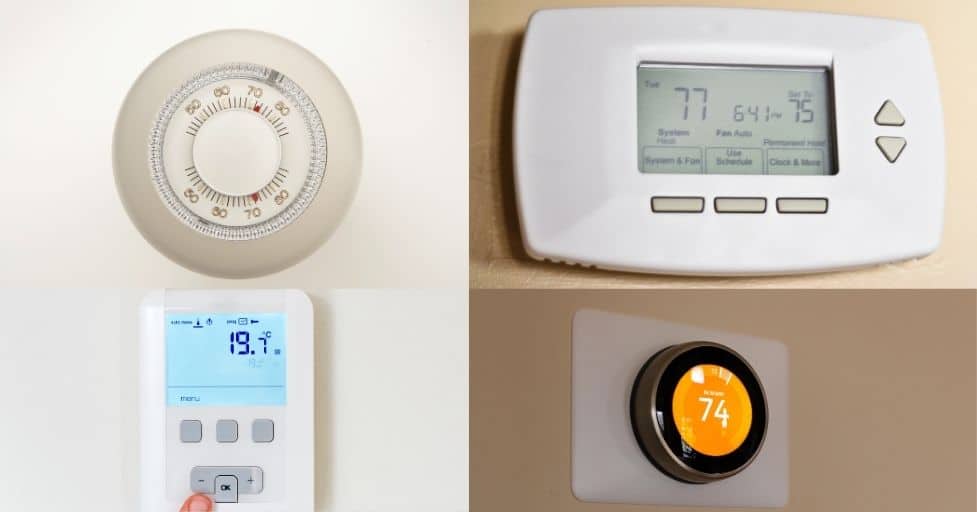
Alright, history buffs, here’s a quick trip down memory lane! The concept of the programmable thermostat has been around since the 1970s, but it wasn’t until the 21st century that things really heated up (pun intended!).
The game-changer came in 2007 when a couple of former Apple engineers founded Nest Labs. In 2011, they introduced the Nest Learning Thermostat, and boy, did it make waves! This sleek, intuitive device learned from user behavior and could be controlled via smartphone. It was like the iPhone of thermostats!
Since then, the smart thermostat market has exploded. Companies like Ecobee, Honeywell, and many others have jumped on the bandwagon, each bringing their own unique features to the table. We’ve seen the introduction of voice control, geofencing, and even air quality monitoring.
As someone who’s renovated multiple properties, I can tell you firsthand that installing smart thermostats has been a game-changer. Not only do they impress potential renters, but they’ve also helped me keep energy costs down across all my properties. It’s a win-win!
The Smart Thermostats Reviews and Advantages
Now that we’ve covered the basics, let’s dive into the juicy stuff – the benefits of these brainy temperature controllers! Trust me, after seeing these advantages, you’ll be wondering how you ever lived without one.
Energy savings and lower utility bills
Let’s talk money, honey! One of the biggest perks of smart thermostats is their potential to slash your energy bills. According to a study by Nest, their smart thermostats saved customers an average of 10-12% on heating and 15% on cooling costs. That’s some serious cash back in your pocket!
How do they pull off this magic trick? Well, it’s all about optimization. Smart thermostats can:
- Automatically adjust temperatures when you’re away or sleeping
- Learn your preferences and optimize heating/cooling cycles
- Provide tips on how to save even more energy
As a landlord, I’ve seen how these savings can add up across multiple properties. It’s not just good for your wallet – it’s great for the planet too!
Remote control and smartphone integration
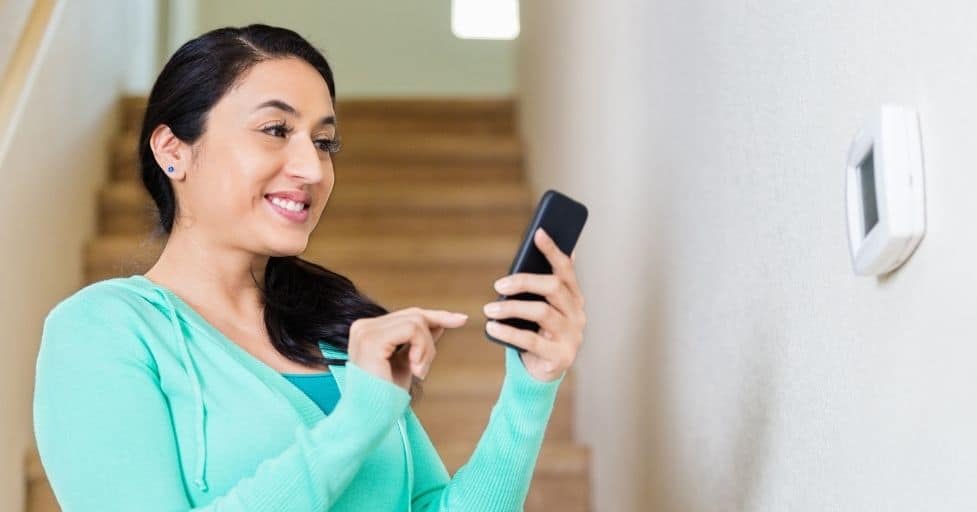
Picture this: you’re cozied up in bed on a chilly morning, but your bedroom is freezing. With a traditional thermostat, you’d have to brave the cold to adjust the temperature. But with a smart thermostat? Just grab your phone, open the app, and voila! Warm air is on its way.
This remote control feature isn’t just about convenience (though that’s a big plus!). It also means you can:
- Preheat your home before you arrive
- Turn down the AC if you forgot when leaving for vacation
- Monitor your home’s temperature while you’re away
As a contractor, Nathan had clients rave about how this feature has changed their lives, especially for their vacation homes or elderly parents’ residences.
Learning capabilities and automation
Here’s where smart thermostats really shine – they’re like little HVAC butlers, learning your preferences and routines to keep you comfortable without you having to lift a finger.
Most smart thermostats use a combination of built-in sensors, geofencing technology, and artificial intelligence to create a personalized comfort schedule. They can detect:
- When you’re home or away
- Which rooms you use most often
- How quickly your home heats up or cools down
Over time, they use this info to fine-tune your HVAC usage, ensuring you’re always comfortable while minimizing energy waste. It’s like having a tiny, temperature-obsessed genius living in your walls!
Detailed energy usage reports

For all you data nerds out there, smart thermostats offer a goldmine of information about your energy usage. Many models provide detailed reports showing:
- How much energy you’re using daily, weekly, and monthly
- When your HVAC system is working hardest
- How your usage compares to other users in your area
This information is invaluable for identifying patterns and finding ways to further optimize your energy use. As someone who’s always looking to cut costs on my rental properties, I find these reports absolutely fascinating!
Integration with other smart home devices
Last but not least, smart thermostats play well with others in the smart home ecosystem. They can integrate with:
- Voice assistants like Alexa or Google Home (“Hey Google, set the temperature to 72 degrees”)
- Smart lighting systems (dim the lights and lower the temp for movie night)
- Smart blinds (close the blinds and adjust the AC when it’s sunny)
- Security systems (automatically adjust the temperature when you arm your system)
The possibilities are endless! The thermostat, lights, and security system can all work together. It’s like living in the future, and let me tell you, it’s pretty darn cool!
So there you have it, folks – the lowdown on smart thermostats and their many advantages. Whether you’re a tech enthusiast, an energy-saving guru, or just someone who likes the idea of a more comfortable home, smart thermostats have something to offer.
Potential Drawbacks of Smart Thermostats

Let’s take off those rose-colored glasses for a moment and talk about the elephant in the room – the potential downsides of smart thermostats. Don’t get me wrong, I’m a huge fan of these high-tech temperature tamers, but as with any technology, they’re not without their quirks and quibbles. So, let’s dive into the less-than-perfect aspects of these gadgets. After all, knowledge is power, right?
Initial cost and installation expenses
Let’s start with the biggie – the hit to your wallet. Smart thermostats aren’t exactly cheap! While prices have come down over the years, you’re still looking at anywhere from $100 to $300 for a quality model. That’s a far cry from the $20 you might spend on a basic programmable thermostat.
Also, Installation can be a whole other can of worms. If you’re handy with a screwdriver and have a C-wire (common wire) already in place, you might be able to DIY it. But if not, you could be looking at an additional $100 to $300 for professional installation.
Now, we’ve installed a few of these babies in our renovation projects, and I can tell you that the process isn’t always smooth sailing. In one memorable instance, what should have been a simple swap turned into a full-day affair when we discovered the previous owners had done some, let’s say, “creative” wiring.
That said, many users find that the long-term energy savings offset the initial investment. It’s all about playing the long game!
Compatibility issues with older HVAC systems
Here’s a fun fact for you: about 40% of U.S. homes still use HVAC systems that are over 20 years old. If you’re in that boat, you might hit some choppy waters when trying to install a smart thermostat.
Older systems often lack the necessary C-wire that many smart thermostats require for power. Without it, you might experience issues like:
- Erratic behavior from your thermostat
- Short cycling of your HVAC system
- Complete failure to operate
In Nathan’s contracting days, he has seen plenty of homeowners get excited about upgrading to a smart thermostat, only to be disappointed when their vintage HVAC system throws a wrench in the works. Sometimes, there are workarounds, but other times, you might be looking at a more extensive (and expensive) HVAC upgrade.
Privacy concerns and data collection

Okay, time to put on our tinfoil hats for a moment. Smart thermostats are, well, smart – which means they collect a lot of data about your home and habits. We’re talking about:
- When you’re home and away
- Your temperature preferences
- Your energy usage patterns
Now, companies like Nest and Ecobee claim this data is used to improve their services and help you save energy. But let’s be real – in today’s world, data is gold. There’s always the possibility that this information could be sold to third parties or accessed by hackers.
I remember one client who was so concerned about privacy that he insisted on a “dumb” thermostat in his otherwise super-connected smart home. Extreme? Maybe. But in an age where our toasters are spying on us (just kidding… maybe), it’s not an unfounded concern.
Reliance on Wi-Fi and potential connectivity issues
Here’s the thing about smart devices – they’re only as smart as their connection allows them to be. If your Wi-Fi goes down, your fancy thermostat might turn into a very expensive paperweight.
Most smart thermostats will continue to operate on their last known schedule if they lose connectivity, but you’ll lose access to many of their smart features. No remote control, no energy reports, no automatic updates.
Learning curve for less tech-savvy users
Last but not least, let’s talk about the tech factor. For those of you who grew up with smartphones glued to our hands, navigating a smart thermostat app is a breeze. But for others? It can be like trying to decipher hieroglyphics.
I’ve seen this play out in real-time with some of my older clients. Features that seem intuitive – like geofencing or setting up IFTTT routines – can be overwhelming for those who are used to simply turning a dial.
The good news is that most smart thermostat interfaces are designed to be user-friendly, and many companies offer excellent customer support. But it’s definitely something to consider if you’re thinking of installing one for a less tech-savvy family member or tenant.
So there you have it, – the potential pitfalls of smart thermostats. Are they dealbreakers? For most people, probably not. But they’re certainly worth considering as you weigh your options. Remember, the smartest choice is the one that works best for your specific situation. Now, who’s ready to talk about some solutions to these problems?
Popular Smart Thermostat Features
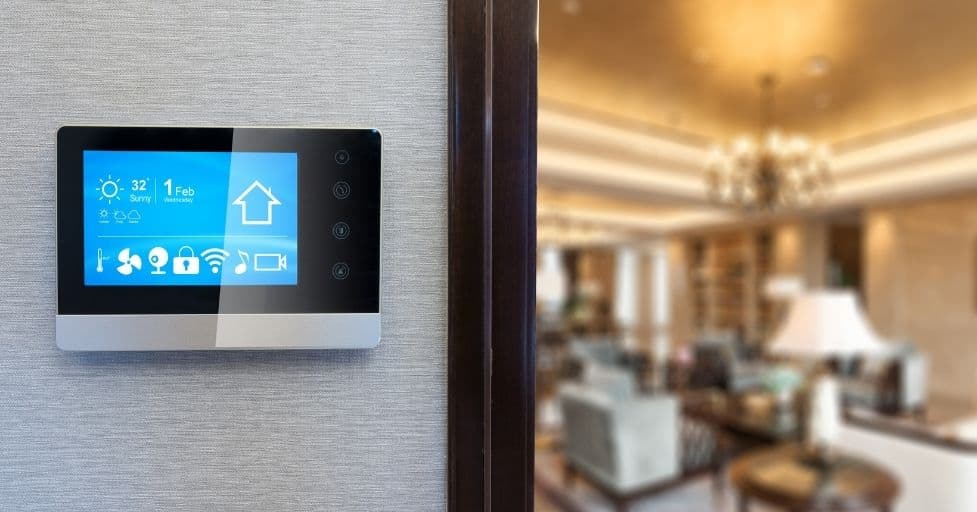
Alright, tech enthusiasts and comfort connoisseurs, it’s time to geek out over some of the coolest features that make smart thermostats, well, smart! These aren’t your grandma’s old-school temperature dials – we’re talking about cutting-edge tech that can make your home feel like it’s straight out of a sci-fi movie.
Did you know that the global smart thermostat market is expected to reach $6.4 billion by 2026? That’s a whole lot of smart temp control! Let’s dive into the features that are making these devices so popular.
Geofencing and occupancy sensing
Imagine your home knowing exactly when you’re about to walk through the door and adjusting the temperature to your perfect comfort level. That’s the magic of geofencing and occupancy sensing!
Geofencing uses your smartphone’s location to create a virtual boundary around your home. When you cross that boundary, your thermostat springs into action. It’s like having a tiny HVAC genie granting your temperature wishes!
Occupancy sensing, on the other hand, uses built-in sensors to detect movement in your home. This feature is great for:
- Adjusting temperatures in specific rooms based on usage
- Switching to energy-saving mode when no one’s around
- Providing insights into your home occupancy patterns
Voice control integration (Alexa, Google Assistant, etc.)
Welcome to the future, where you can control your home’s temperature with just your voice! Most modern smart thermostats play nice with popular voice assistants like Amazon Alexa, Google Assistant, and Apple’s Siri.
Imagine this scenario: You’re cooking up a storm in the kitchen, hands covered in flour, and suddenly it feels too warm. No problem! Just call out, “Hey Google, set the temperature to 72 degrees,” and voila! Comfort achieved, no floury handprints on your thermostat.
In your home you can set up voice commands for different scenarios:
- “Alexa, it’s movie time” lowers the temperature and dims the lights
- “Hey Google, good morning” gradually warms up the house as we wake up
- “Siri, we’re going on vacation” sets the house to energy-saving mode
It’s not just convenient – it’s downright fun!
Multi-zone temperature control

If you’ve ever fought over the thermostat with your family or roommates, multi-zone temperature control might just be the peacekeeper you need. This feature allows you to set different temperatures for different areas of your home.
With multi-zone control, you can:
- Keep the bedrooms cool while the living area stays warmer
- Adjust temperatures based on room usage throughout the day
- Accommodate different temperature preferences for different family members
As a contractor, Nathan has installed multi-zone systems in larger homes, and it’s a game-changer. No more hot and cold spots, no more thermostat wars. Just personalized comfort for everyone!
HVAC system monitoring and maintenance alerts
Here’s a feature that really gets the contractor senses tingling – HVAC system monitoring. Smart thermostats can keep an eye on your heating and cooling system, alerting you to potential issues before they become major problems.
These thermostats can track things like:
- How long your system runs to reach the desired temperature
- Whether your filter needs changing
- If there are any unusual patterns in your system’s operation
Eco-friendly modes and energy-saving tips

Last but certainly not least, let’s talk about saving the planet (and your wallet) with eco-friendly modes and energy-saving tips. Many smart thermostats come with built-in features designed to optimize your energy usage.
These can include:
- “Eco” or “Away” modes that automatically adjust to energy-efficient settings
- Humidity sensors that help your HVAC system run more efficiently
- Tips and suggestions for saving energy based on your usage patterns
Some thermostats even gamify the energy-saving process, challenging you to reduce your consumption and earn “leaf” icons or other rewards. It’s like a Fitbit for your home’s energy use!
That’s a win for the environment and the bottom line!
So there you have it – the crème de la crème of smart thermostat features. From voice control to eco-friendly modes, these devices are packed with tech that can make your home more comfortable, efficient, and, well, smarter! Whether you’re a tech enthusiast or just someone who wants to save on energy bills, there’s a feature here for everyone. Now, who’s ready to upgrade their home’s IQ?
Choosing the Right Smart Thermostat
Now it’s decision time! What is the best intelligent thermostat? With so many smart thermostats on the market, choosing the right one can feel like finding a needle in a haystack. But don’t worry, I’ve got your back! After installing dozens of these brainy temperature controllers in various homes and rental properties, we’ve learned a thing or two about picking the perfect match.
Did you know that the average American household spends more than $2,000 annually on energy bills, with nearly half of that going to heating and cooling? Choosing the right smart thermostat could put a significant dent in that figure. So, let’s roll up our sleeves and dive into the nitty-gritty of smart thermostat selection!
Factors to consider (home size, HVAC system, budget)

First things first, let’s talk about what really matters when choosing a smart thermostat. It’s not just about picking the flashiest model with the biggest touchscreen (though that can be fun too!).
Home size: If you’ve got a cozy studio apartment, a simple single-zone thermostat might do the trick. Here are the 5 best simple programmable thermostats for smaller homes.
- Ecobee3 Lite Smart Thermostat:
- This thermostat offers easy installation and compatibility with most smart home systems, including Apple HomeKit, Amazon Alexa, Google Assistant, and more. It provides energy reports and can help save up to 23% on annual energy bills. It lacks room sensors and Alexa built-in but remains a solid choice for its simplicity and efficiency (TechRadar) (Reader’s Digest).
- Ecobee SmartThermostat with Voice Control:
- This model includes a room sensor for better temperature regulation and built-in Alexa voice control. It also supports other smart home platforms and offers features like energy usage reports and eco+ for maximizing efficiency. The installation may take about 45 minutes (This Old House).
- Emerson Sensi ST75 Touch Wi-Fi Smart Thermostat:
- Known for its ease of use, this thermostat supports various smart home platforms such as Amazon Alexa, Google Assistant, and Apple HomeKit. It provides energy usage reports and has an illuminated easy-click terminal for straightforward installation (This Old House) (Reader’s Digest).
- Wyze Thermostat:
- This thermostat is praised for its easy DIY installation with step-by-step instructions provided via the app. It offers features like a built-in energy-saving mode and learning mode to adjust temperatures based on your habits. It’s a cost-effective choice for those new to smart thermostats (Reader’s Digest).
- Mysa Smart Thermostat for Electric Baseboard and In-Wall Heaters V2:
- Designed specifically for heating systems, this thermostat is compatible with Amazon Alexa, Google Assistant, and Apple HomeKit. It has a minimalist design and provides easy control via a smartphone app. It’s ideal if your studio relies on electric baseboard or in-wall heating (Popular Science).
But for my larger renovation projects, I often opt for multi-zone systems that can handle different temperatures in different areas. Try these best-rated smart thermostats.
- Ecobee Smart Thermostat Premium: This thermostat comes with room sensors that can be placed around your home to monitor and control the temperature in different zones. It’s compatible with Alexa, Google Assistant, Apple HomeKit, and other smart home systems. It also offers advanced features like occupancy detection and energy-saving settings (Android Central) (Meta Domotics).
- Google Nest Learning Thermostat: This thermostat can learn your schedule and preferences over time. It supports multi-zone control through the use of remote sensors, which you can place in different rooms for accurate temperature readings. It integrates well with Google Assistant and other smart home ecosystems, though it does not support Apple HomeKit (Android Central) (Gadget Review).
- Honeywell Home T9 Smart Thermostat: The T9 comes with smart room sensors that detect temperature, humidity, and motion, allowing you to control different zones in your home effectively. It features geofencing capabilities and can be controlled via the Honeywell Home app, making it a versatile choice for multi-zone management (Meta Domotics).
- Honeywell Lyric T6 Smart Thermostat: While it doesn’t come with built-in remote sensor support, you can set up multiple units to achieve multi-zone control. It features excellent voice control with Siri and Alexa, geofencing capabilities, and easy installation (Gadget Review).
- Emerson Sensi Touch Smart Thermostat: Known for its easy installation and user-friendly interface, the Sensi Touch can be used to manage multiple zones by setting up additional units. It works with Alexa, Google Assistant, and Apple HomeKit, offering a flexible and affordable option for multi-zone climate control (Gadget Review).
HVAC system compatibility: This is crucial! Not all smart thermostats play nice with all HVAC systems. Sometimes homeowners love a particular brand, only to find out it wasn’t compatible with their heat pump system. Talk about a facepalm moment!
Budget: Smart thermostats can range from about $100 to over $300. While it’s tempting to go for the cheapest option, remember that features like energy reporting and multi-zone control could save you more in the long run.
Wi-Fi reliability: If your home has Wi-Fi dead zones, consider a thermostat with a strong signal range or the ability to connect to a mesh network.
Best programmable wifi thermostat brands and models in 2024:
It’s 2024, and the smart thermostat market is hotter than ever! (Pun absolutely intended.) While I can’t play favorites, here are some brands and models that have consistently impressed me:
- Nest Learning Thermostat: Still a frontrunner with its sleek design and advanced learning capabilities.
- Ecobee SmartThermostat: A solid choice for those who want Alexa built right into their thermostat.
- Honeywell Home T9: Great for larger homes with its multi-room sensor support.
- Emerson Sensi Touch: A more budget-friendly option that doesn’t skimp on the essential smart features.
Remember, the “best” thermostat is the one that fits your specific needs and home setup. Don’t just follow the hype – think about which features will genuinely improve your daily life.
Installation process: DIY vs. professional
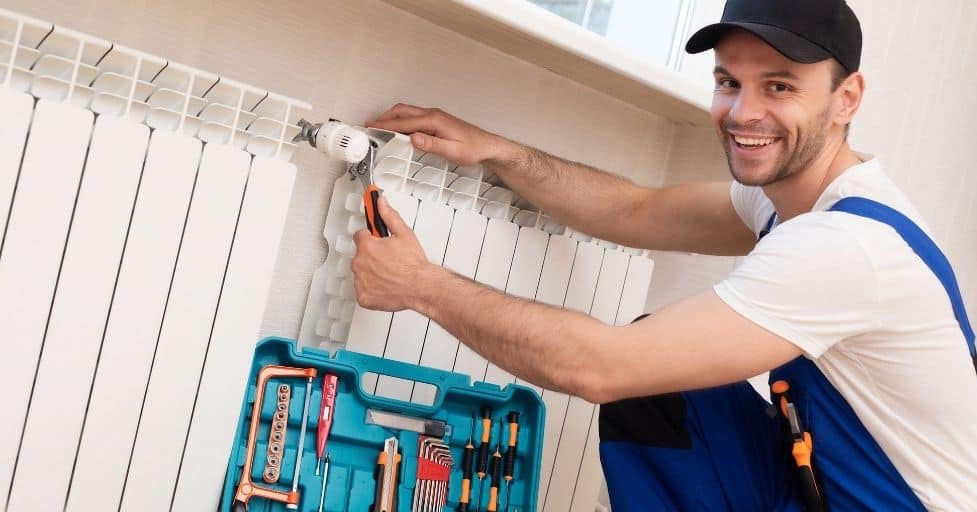
Now, let’s talk about getting that shiny new thermostat on your wall. As a contractor, I’ve seen DIY installations go smoothly… and I’ve seen them go terribly wrong.
If you’re handy with tools and have a C-wire in place, DIY installation can be a breeze. Most smart thermostats come with detailed instructions and even video tutorials. I’ve had clients successfully install their own thermostats in under an hour!
However, if you’re dealing with an older home, complex HVAC system, or just aren’t comfortable messing with wires, professional installation is the way to go. Trust me, the peace of mind is worth the extra cost. I’ve lost count of the number of times I’ve been called in to fix a DIY thermostat installation gone awry.
Pro tip: Some energy companies offer free or discounted professional installation with the purchase of a smart thermostat. It’s worth checking out!
Warranty and customer support considerations
Last but not least, let’s talk about what happens after you’ve got your smart thermostat up and running. Because let’s face it, even the smartest devices can have their “dumb” moments.
When choosing a thermostat, take a good look at the warranty. Most quality brands offer 2-3 year warranties, but some go up to 5 years. In my experience, if something’s going to go wrong, it usually happens in the first year or two.
Customer support is another biggie. You want a company that’s going to have your back when you’re scratching your head at 2 AM, wondering why your thermostat is suddenly speaking Portuguese. (True story from one of my rentals, believe it or not!)
Look for brands that offer:
- 24/7 customer support
- Multiple contact methods (phone, email, chat)
- Comprehensive online resources and troubleshooting guides
I always tell my clients: a good warranty and stellar customer support can be just as valuable as any high-tech feature.
Real-World Impact: User Experiences
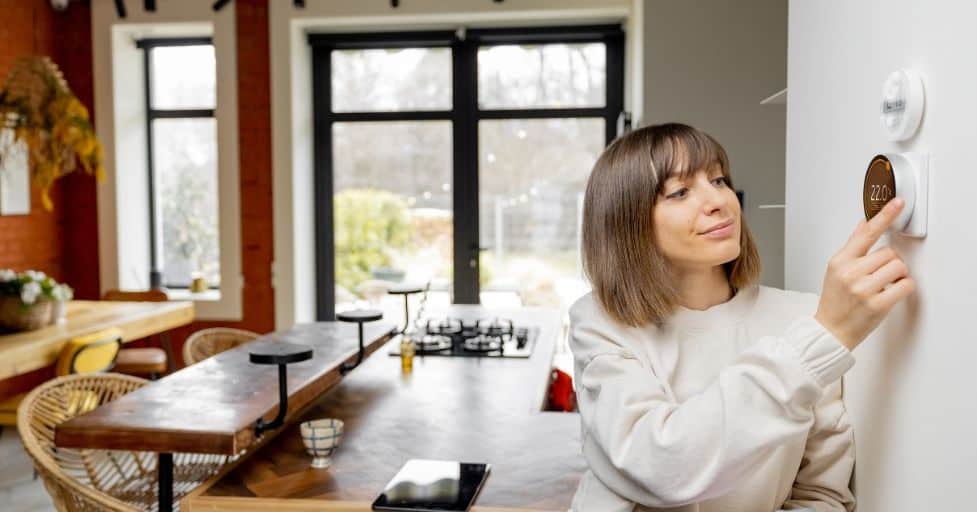
Now that we’ve covered the nuts and bolts, let’s get down to the real talk. What’s it actually like living with a smart thermostat? I’ve installed these gadgets in everything from studio apartments to sprawling mansions, and the feedback has been fascinating. Let’s dive into some real-world experiences!
Common pros and cons of smart thermostats from users
Of course, it’s not all sunshine and rainbows. Here’s what I typically hear from users:
Praises:
- “I love being able to warm up the house before I get home from work!”
- “The energy reports are eye-opening. I had no idea when we were using the most energy.”
- “It’s like the house knows what we want before we do.”
Complaints:
- “Sometimes the ‘learning’ feature gets it wrong, and I wake up freezing.”
- “I wish it was easier to override the schedule without messing up the whole system.”
- “The app can be glitchy at times.”
Interestingly, even with these complaints, most users say they wouldn’t go back to a traditional thermostat. It’s all about the convenience and potential savings!
Tips for maximizing smart thermostat benefits
Alright, you’ve got your smart thermostat installed. Now, how do you make the most of it? Here are some pro tips I’ve gathered over years of installations and follow-ups:
- Give it time to learn: Don’t override the system too much in the first few weeks. Let it learn your patterns.
- Use the away modes: Whether it’s geofencing or manually setting it, these modes can lead to big savings.
- Take advantage of reports: Actually look at those energy reports. They can help you identify and change energy-hungry habits.
- Integrate with other smart devices: If you have smart blinds or fans, sync them up for even more efficient temperature control.
- Season-specific settings: Remember to adjust your preferences as the seasons change.
- Regular maintenance: Just because it’s smart doesn’t mean it doesn’t need a little TLC. Clean sensors and check for software updates regularly.
Remember, a smart thermostat is a tool. Like any tool, its effectiveness depends on how you use it. With a little attention and the right approach, you can turn your smart thermostat into a real energy-saving, comfort-boosting superhero for your home!
So, there you have it – the inside scoop on choosing and using smart thermostats. Whether you’re a tech enthusiast or just looking to save on your energy bills, there’s a smart thermostat out there with your name on it. Happy temperature controlling!
Conclusion for Pros and Cons of Smart Thermostats:
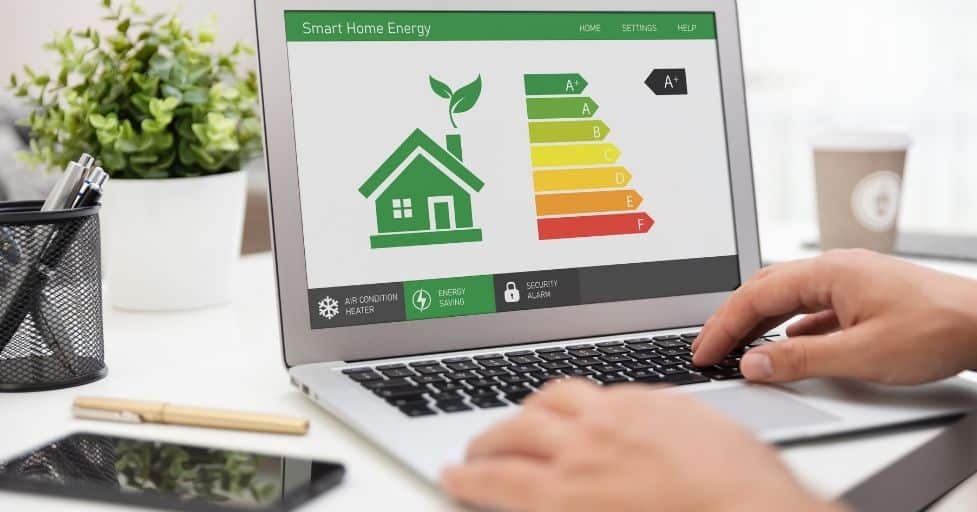
Whew! We’ve covered a lot of ground on the pros and cons of smart thermostats, haven’t we? From energy savings to potential privacy concerns, these little gadgets pack quite a punch. While they offer impressive features and the potential for significant cost savings, it’s crucial to weigh the pros and cons based on your specific needs and home setup.
Remember, the “smartest” choice is the one that works best for you and your family. Ready to take control of your home’s climate and potentially slash those energy bills? Give a smart thermostat a try – your wallet (and the planet) might just thank you! We hope you found these pros and cons of smart thermostats helpful. Have you had any experiences with smart thermostats? We’d love to hear your thoughts in the comments below!
5 FAQs about the Pros and Cons of Smart Thermostats
- Q: How much money can I save with a smart thermostat? (Keywords: smart thermostat savings, energy bill reduction)
A: On average, users save 10-15% on heating and cooling costs. This can mean $100-$200 per year for many households. Your actual savings depend on your home, habits, and local energy prices.
- Q: Do I need special wiring to install a smart thermostat? (Keywords: smart thermostat installation, C-wire requirement)
A: Most smart thermostats need a C-wire for power. Many newer homes have this, but older ones might not. If you don’t have a C-wire, you can often install an adapter or have an electrician add one.
- Q: Can I control my smart thermostat when I’m not home? (Keywords: remote thermostat control, smart home app)
A: Yes! Smart thermostats connect to your home’s Wi-Fi, letting you control them through a smartphone app from anywhere. You can adjust temperatures, set schedules, and even get alerts about your home’s climate.
- Q: Will a smart thermostat work with my old HVAC system? (Keywords: smart thermostat compatibility, old HVAC systems)
A: Many smart thermostats work with a wide range of systems, including older ones. However, it’s best to check the compatibility of specific models with your HVAC system before buying. Some may need professional installation.
- Q: Are smart thermostats hard to use for non-tech-savvy people? (Keywords: user-friendly smart thermostats, easy-to-use home tech)
A: While they have advanced features, most smart thermostats are designed to be user-friendly. They often have simple touchscreen interfaces and intuitive apps. Many also offer voice control, making them easier for everyone to use.






